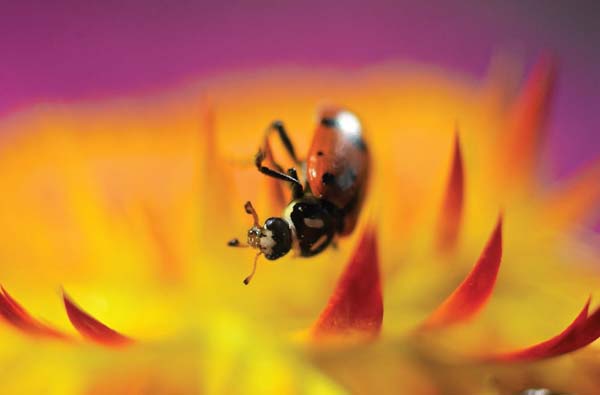
The qualities of available light vary widely. Sometimes the light is diffused and soft, and the colors in the scene are softer and more muted in turn. Other times, the light is harder and the colors in the scene are more intense. You don’t have to settle for recording an image “as is.” You can flex your creative muscle and amp up the colors to create a feeling that suits your creative vision.
Saturation refers to the richness of the colors that are present in the image. In images with low saturation, the colors are pale and more pastel. The photographs may seem placid or sedate, and the images may have a more passive feel. When you use your in-camera contrast setting to amp up the saturation, the color in your images is much more vibrant and intense. Images made this way command the viewer’s attention. They have a palpable energy.
Needless to say, by manipulating the saturation setting, you can control the way that your image affects the viewer.
Most photographers see and photograph just one thing—their subject. They fail to see what surrounds the subject, let alone the wondrous options of available light. Artists do things differently. They feel and visualize everything—not just the subjects, but lighting, color, contrast, composition, and more. They visualize what would happen if they could change these image elements, rearrange them, manipulate them, and then they simply shoot whatever feels right.

Think about what will happen if you make color a priority before you shoot, setting up your shots because of the intensity you foresee. The photos you see here were shot aggressively, with the saturation at its highest setting. If your images contain color and that’s what you want your viewers to see, then hit it hard. See what your own camera affords. You may be shocked at what can come out of your machine.